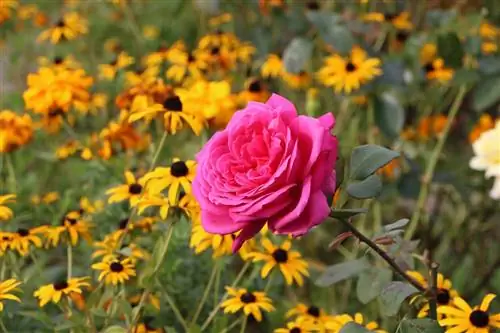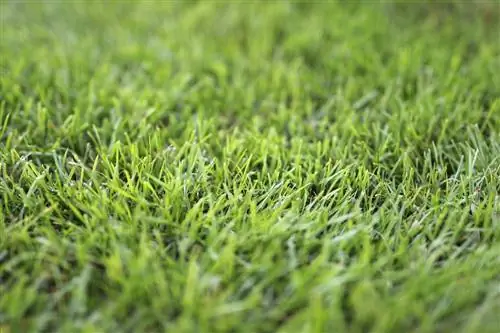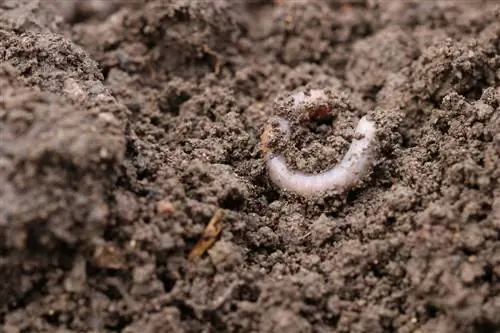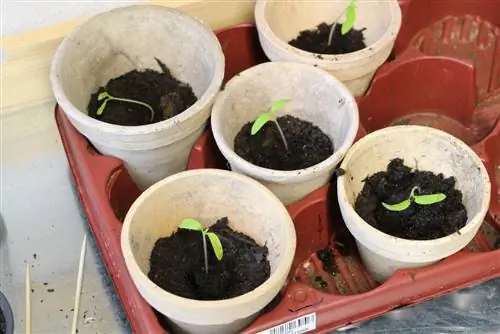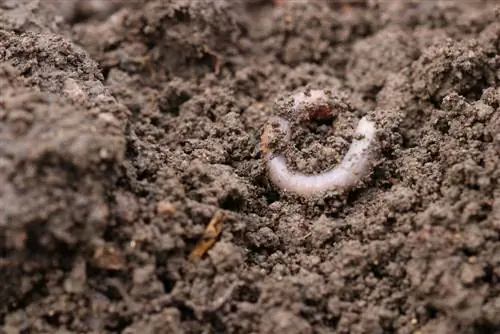- Author admin [email protected].
- Public 2023-12-17 03:39.
- Last modified 2025-01-24 12:45.
If you want to make your garden visually impressive but still easy to care for, you often choose climbing ivy. Just plant and wait for the shoots to make their way? That's not enough. If the evergreen plant makes relatively few demands on its environment, the tips in this guide will help it grow even better.
Did you know
that ivy doesn't just thrive in the garden? The plant is also suitable
- as a houseplant,
- for pots and flower boxes
- and even about bonsai culture
Location tips
The location forms the basis for the ivy and is therefore one of the most important points that should be carefully considered before planting.
The Location
- shady
- no midday sun
- Orient potted plants to the north
- Placing houseplants on the windowsill
The climbing plant grows splendidly even in the shade. In an emergency, however, it can also be satisfied with a partially shaded location. Some light is absolutely necessary for colorful varieties so that the plant develops its typical foliage color.
Avoid arguments

However, the gardener should plan ahead when planting and not plant Hedera helix L too close to the neighboring property. Once the plant has spread along walls and fences, the long, green shoots are difficult to tame. Overgrown trees even threaten to die. Masonry also suffers from the tendrils. On smooth walls, residue often remains after removal.
Suitable neighbors
When planting, it is not necessary to maintain a large distance from other plants. Hedera helix L also feels comfortable in company and loves to climb nearby tree trunks. In order for both plants to thrive, the neighbors should have similar location requirements, i.e. be able to develop in moist soil and in the shade.
The real earth
As long as the soil is sufficiently moist, Hedera helix L is happy with almost any substrate. However, waterlogging must not occur. Anyone who cultivates ivy in a pot should therefore definitely provide it with drainage. The easiest way to do this is for the gardener to drill a hole in the ground. Expanded clay is also a useful alternative. The airy, brown balls soak up water, keeping the roots moist but preventing stagnant water from forming.
Planting Tips
There are also a few very important points to consider when planting.
Planting time
If you want to plant the climbing plant in your own garden, it is best to use spring or autumn. Basically, planting is possible at any time of year as long as it doesn't freeze.
Planting spacing

The evergreen plant is known for its extensive spread. In order to develop the long shoots with sufficient nutrients, it also forms a large root system underground. If the gardener uses Hedera helix L as a ground cover, the individual plants need around 25 cm apart so as not to interfere with each other.
Planting instructions
- Dig a planting hole suitable for the root ball
- Put the plant in the ground
- Roots must be completely covered
- Water the substrate well
Do not transplant
Due to the extensive root system, it is not advisable to transplant Hedera helix L. Therefore, the gardener should carefully consider the location before planting.
Care tips
With the right care, you can enjoy your ivy for a very long time, so be careful.
Wear gloves
All parts of the ivy plant are poisonous. Skin contact alone leads to inflammation. But fruits and flowers in particular contain highly toxic juices. If children, dogs or cats consume these parts of the plant, they risk serious he alth problems. Fortunately, ivy only develops these in old age.
What is surprising, however, is that the plant is an important component of homeopathy. Here, however, doctors only use the leaves. Extracts from ivy foliage can also be found in shampoos. However, the gardener should leave the production exclusively to the industry and not dare to experiment on his own.
Note:
Since ivy is poisonous, it is only suitable for pet owners to a limited extent. On the other hand, the plant is very valuable for other animals. Since the plant blooms in autumn, it serves as a popular source of nectar for numerous insects before winter. To prevent bees and wasps from entering the home, the gardener should not allow windows to be covered in house walls.
Cut regularly

The long ones. Evergreen shoots look beautiful, but can also become a nuisance. Regular pruning is the only way to keep growth in check.
Recommendation:
Use the long shoots as a privacy screen on the balcony or terrace.
Pouring
Hedera helix L requires consistently moist substrate. The gardener should water the soil well after planting. As long as the water can drain away, there is no risk of waterlogging forming. In summer, the gardener needs to increase the amount of water.
Winter protection
The common ivy is completely winter-proof. Light frost protection made from mulch or fir branches is only recommended in the first two years of growth. Colorful varieties are more susceptible to frost and require root protection even after this time.
Tips for Propagation
If you enjoy your ivy, you can share it too. Here you can find out how to propagate ivy.
Use cuttings
- Take cuttings in spring
- Fill pots with potting soil
- Put cuttings in it
- alternatively place in a glass with clean water
- wait for new roots to form
Interesting to know: The age of the shoots used for propagation plays a crucial role in the later growth form of the ivy. While young plants form normal, climbing shoots, old shoots grow into bushes. But when do botanists actually speak of an adult plant? Hedera helix L is considered fully grown from the tenth year onwards. Once it reaches this age, its shape also changes. As described above, the plant then grows upright. A change can also be seen in the leaves. Only after the tenth year does the plant form a flower, which, however, leads to poisoning if consumed.


